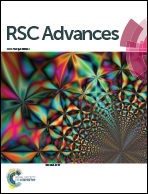Strong memory effect at room temperature in nanostructured granular alloy Co0.3Cu0.7
Abstract
Magnetic studies have been performed to characterize Co0.3Cu0.7 granular alloy synthesized by chemical reduction. The alloy consists of superparamagnetic (SPM) particles with a mean size of 14 nm and a blocking temperature distribution extending to ∼380 K. Even at 4 K where the alloy is largely ferromagnetic, the average magnetic moment of cobalt is smaller than its expected value indicating that not all Co atoms contribute to ferromagnetism. A significant temperature dependent exchange bias field is obtained from above 100 K down to 2 K. These observations suggest that the particles have a Co rich SPM core, surrounded by uncompensated dilute Co spin moments at the surface. Such a distribution, with lowering of temperature, leads to the co-existence of ferromagnetic (FM) and antiferromagnetic (AFM) interactions in the core and surface regions, respectively. Also, the sample exhibits a weak spin-glass like ordering occurring at ∼7 K. The overall behavior of the system is that of an assembly of almost non-interacting magnetic nanoparticles as suggested by the study of relaxation of magnetization. If during relaxation certain external conditions are temporarily disturbed, e.g., by lowering the temperature or changing the magnetic field the magnetization also changes accordingly; but as the conditions are restored the magnetization returns to its previous value. Such magnetic ‘memory effect’ has been studied with various experimental protocols and persists strongly even at room temperature.


 Please wait while we load your content...
Please wait while we load your content...